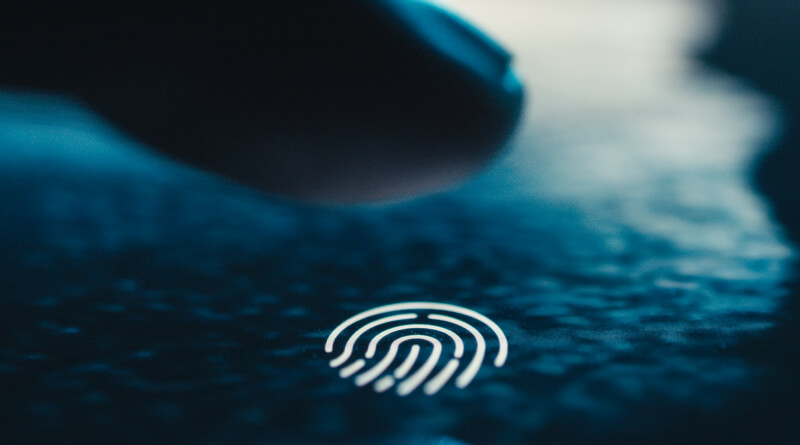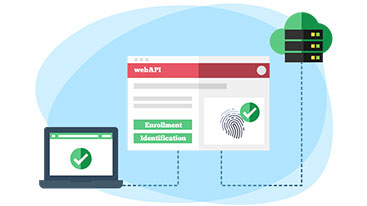The Top 5 Uses of Biometrics Across the Globe
Over the years, we have seen steady upward growth of biometric technology across the globe for myriad reasons but mostly due to the fact that personal identification and authentication is considered more and more important. From border and immigration control to identifying criminals to time and attendance in workforce management, the practical uses of biometrics are growing rapidly.
Many businesses consider biometrics to be applicable for government use only but they are quickly learning that the applications of biometrics extend far beyond the government use exclusively. In this post, we will discuss the top 5 uses of biometric technology across the globe — places where the technology is used to create more security and convenience for everyday citizens.
Airport Security
Making the journey through airport terminals more seamless for passengers is a goal shared by airports around the world. Biometric technology to verify passenger identities has been used in several large international airports for a number of years and the technology is quickly spreading to other locations across the globe.
In many airports, the top biometric modality choice for immigration control is iris recognition. In order to use iris recognition, travelers are first enrolled by having a photo of their iris and face captured by a camera. Then, their unique details are stored in an international database for fast, accurate identification at ports of entry and exit that use iris recognition for traveler identity verification. When travelling, instead of waiting in long queues to be processed, passengers simply walk into a booth and look into an iris camera. The camera then photographs the iris and a software program then matches the details with the information stored on the database.
Biometrics simplifies the airport experience for millions of passengers travelling every day. Use of the technology also ensures the highest level of security and safety.
Time and Attendance
Workforce management is another field where the use of biometrics is on the rise. Fraudulent employee time and attendance activities are a common phenomenon in organizations throughout the world. According to an American Payroll Association study, the average employee reportedly steals approximately 4 and a half hours per week, which is equivalent to 6 weeks’ vacation if extrapolated over a year. To solve this issue, companies are implementing biometric time clocks on their work sites.
A biometric time and attendance system is the automated method of recognizing an employee based on a physiological or behavioral characteristic. The most common biometric features used for employee identification are faces, fingerprints, finger veins, palm veins, irises, and voice patterns. When an employee attempts identification by their biological traits, a biometric hardware device compares the new scan to all available templates in order to find an exact match.
Even government organizations now rely on biometrics for ensuring timely attendance of staff and accurate payroll calculations.
Law Enforcement
Organizations like the Federal Bureau of Investigations (FBI) and Interpol have been using biometrics in criminal investigations for years. Today, biometrics is widely used by law enforcement agencies across the world for the identification of criminals. In 2008, the Chinese Police adopted an ABIS solution to allow forensic fingerprint examiners the ability to cross check inmate identities for possible matches within the database.
Biometrics is also widely used for jail and prison management. Biometrics provides a modern solution by which the Jail Authority, Public Safety Departments, and Governments can safely and securely manage prisoner identities.
Access Control & Single Sign On (SSO)
The primary reason behind more and more organizations and personnel across the globe adopting biometric technology for access control and Single Sign On (SSO) is because traditional authentication tactics like passwords are insufficient for personal identification. Passwords only provide evidence or proof of knowledge whereas biometrics provides unique advantages because it relies on identifying someone by “who they are” compared to “what you know “or “what you have.”
Today, biometrics is widely used around the world for home access control, mobile phone access, vehicle access authentication and Single Sign On (SSO).
Banking – Transaction Authentication
Biometrics in banking has increased a great deal in the last few years and is being implemented by banks throughout the world. As global financial entities become more digitally-based, banks are implementing biometric technology to improve customer and employee identity management in an effort to combat fraud, increase transaction security, and enhance customer convenience. Customers are also fed-up with identity theft and the inconveniences associated with constantly having to prove their identities. As a result, more and more customers are looking for banks that have biometric authentication in place prompting banks to more closely research the technology for implementation.
Conclusion
Biometric identification management systems offer higher security, convenience, accountability, and accurate audit trails – all attributes that motivate businesses to research and implement the technology for their own use. We believe that as time moves forward, we will see implementation of biometric technology continue to grow and be used in even more areas that touch our lives.













Another great area where biometrics can be useful is pension distribution. One can reduce pension fraud if all the users are registered via biometrics.